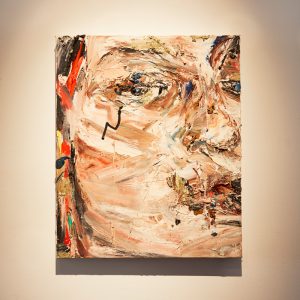Artists
artists
About 360bespoke: One of New York’s most sophisticated, discerning PR agencies. With a first-class collection of talents and brands in lifestyle, beauty, fashion, pursuits, and the arts, we provide elegant, tailored strategies, campaigns, and media coverage that overdelivers results and exceeds expectations.
Subscribe to get the latest news about 360bespoke
Born in London, Siem studied the violin at the Royal College of Music with Itzhak Rashkovsky, and later with Shlomo Mintz, while attending Eton College and Cambridge University. At only 30 years of age, he became the youngest Professor of Music in the UK (Leeds College of Music). He performs with one of the rarest instruments on the classical music stage — a priceless 1735 Guarneri del Gesù violin once owned by the king of Prussia.
Siem’s dapper, international lifestyle has made him a muse for designers like the late Karl Lagerfeld, who photographed Siem for both the 2015/16 Dior men’s campaign and his art book Little Black Jacket (Taschen), which he did with former French Vogue editor Carine Roitfeld. In addition, he has been named to Vanity Fair’s International Best Dressed List in 2014 and 2017.
Did you always want to become a violinist?
I’ve always played the violin — I picked up on it when I was three and I’ve never looked back. It was my mum who introduced me to the instrument. She used to play tapes of music and I really fell in love with it. The repertoire for the violin is particularly special, there’s so much variety. Some of the great pieces which I used to listen to as a child are absolutely inspirational and they really stimulated my imagination. And it was wanting to play this music myself that really led me into it.
What are some of your fondest musical memories?
When I was 11, I played in Israel, in Tel Aviv — the Vivaldi concerto for four violins with Ida Haendel, one of the great violinists of all time, whom I studied with, and Shlomo Mintz, who is also my teacher. That was a great memory for me. Also, when I first played with the Oslo Philharmonic (I’m half Norwegian). I also remember playing with the Royal Philharmonic in Kenwood House, which is this big open-air venue in London, when I was 17. When I wrote my own piece, one or two years ago, and recorded this with the English Chamber Orchestra, that was a special moment for me because I’ve never written a piece before.
How does being so well-traveled affect your music?
Playing the violin is a very technical thing, and traveling is distracting in a way because the best way to be good at the violin is to stay in one place and practice very hard. But travelling is a great privilege and I enjoy it as much as I can. I don’t know if that affects the way you play, but I think it affects the way you enjoy music and what you get out of music. Your breadth of understanding is expanded when you travel because you see various different cultures, meet very different people and this opens you up. It makes you more aware of the differences in the world. And this allows you somehow to maybe be more generous in the way you express yourself in the music.
You have also become a style ambassador and muse for designers like Karl Lagerfeld. When did this develop?
By chance. I was playing a concert and I was asked the next day to be in the Dunhill campaign. I thought this was a great way to get exposure as a violinist and so I said yes. That’s how it started. I’ve done a few things in the fashion world and I continue to do things with those guys because I can meet a lot of interesting people and it doesn’t take much time. And I get paid very well!
You make it sound very easy.
If you’re lucky to work with great photographers, they make everything happen. It’s different than music but the same principles apply — you really have at it. And it’s a challenge every time when you go on the stage to do the best you can and to be at your highest level.
Why do you think the fashion world has taken such a liking to you?
I’ve got my personal style and I feel strong about who I am. I don’t think of myself as a fashionable person. I don’t follow the fashion of today. I like clothes and I like style but I find my own style, which is not necessarily the fashion of today. I do something unusual for the fashion world to use – they don’t have many violinists that they use. It’s an unusual but kind of glamorous connection.
What is your style secret?
The key to me is wearing clothes that fit you in a very complimentary way and are tailored particularly to your body shape. And also not to be wearing very flamboyant clothes so that everyone looks at the clothes and they don’t look at you. You don’t want people to just notice the clothes and not the person. I don’t like too many colors – I keep it simple.
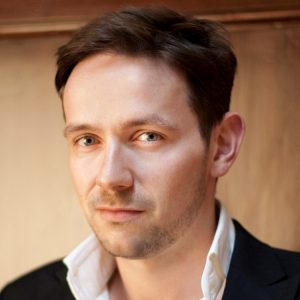
Recent highlights have included two Bach recitals at the Edinburgh International Festival, Britten’s ‘A Midsummer Night’s Dream’ at the Aldeburgh Festival and Schubert’s ‘Die Schöne Müllerin’ with Julius Drake at Middle Temple Hall, London.Future plans include Thomas Adès’s “The Exterminating Angel’ at the Metropolitan Opera New York and Farinelli & the King with Mark Rylance on Broadway, New York.
His recordings include two versions of Handel’s Messiah (New College Oxford, AAM/Naxos) and (Polyphony, Britten Sinfonia/Hyperion), Handel’s Chandos Anthems on Hyperion, Handel’s Flavio for Chandos with The Early Opera Company and Christian Curnyn, Bach’s Easter Oratorio with Retrospect Ensemble, his debut solo recording Live at the Wigmore Hall with his own Ensemble Guadagni, a disc of Porpora Cantatas with Jonathan Cohen and Arcangelo, an award winning disc of works for Guadagni for Hyperion and a disc of Handel arias with The King’s Consort for Vivat. 2014/5 saw the release of The Art of Melancholy, a recital of Dowland songs for Hyperion, Flow my tears, songs for lute, viol and voice on the Wigmore Live label and Arise my muse for which he received the Gramophone Recital Award.
He is the recipient of the 2010 Royal Philharmonic Young Artist of the Year Award, the 2012 & 2014 Gramophone Recital Award, the 2013 Critics’ Circle Awards for Exceptional Young Talent (Singer).
How do you treat/maintain your voice after performing six nights a week for 4 months?
In addition to the health routine I developed, I worked very hard at not trying to produce something magical all of a sudden, which you can do when you’ve had days of rest between operas or concerts. Instead, I had to be very monk-like and follow an almost religious path of ablutions, vocally speaking. I kept my warming up routine to the minimum necessary for the show and tried not to sing anything until each afternoon to give myself ‘recovery time’ after performances. Like athletes, when we use our vocal muscles, at least half of the preparation for a future performance is in the recovery from the previous one. Without recovery, you are singing on tired vocal cords. Inevitably, after weeks of day to day performing, the cords and vocal muscles accumulate tiredness, but the pay-off is that they also acquire a resilience.
What is your favorite opera to perform?
It’s a difficult thing to nominate a favorite opera to perform because there is the music and then there is the dramatical side of things, which can often be deadened for you by a limp production. But I’ve had enjoyable times performing Britten’s ‘A Midsummer Night’s Dream’ as the character Oberon, a role written specifically for a countertenor which holds a special place in the canon for all countertenors. My most memorable experiences performing in operas have been when the cast gels and the whole is greater than the sum of its parts, so for example this summer we performed Handel’s ‘Saul’ (strictly an ‘oratorio’ not one of his operas but staged at Glyndebourne Festival Opera very successfully by Barrie Kosky). The energy that Barrie brings to his productions rubs off on every performer, and this piece relied a great deal on that energy coming from the chorus, who were phenomenal. You feel part of a team of dozens of performers instead of being one of a few ‘stars’ trying to hold a show together! Much more enjoyable.
Who are your greatest influences?
The single greatest influence on my musical life was my time singing as a boy in the Choir of St John’s College at Cambridge. To me, it was more than just another choir. I can listen to 100 recordings of different choirs and tell you exactly which was at St. John’s. There is a tradition of singing in the choir that somehow passes down the ages of each new group of performers that favors a very emotional commitment to words and from that the phrasing of the music sounds very persuasive. To the untrained ear, I suppose it translates as a sense that by listening you are being literally transported. I remember singing as a boy, and even now watching the boys there sing, they remain, as I was, very physical and demonstrative in their delivery of the music. It is not the rigid, cliché ‘English discipline’ you’d expect. It gets in your bones when that is your upbringing. It’s true in anything I suppose; one’s early experiences imprint themselves on you for the rest of your life. For me it was that – the emotional delivery above everything else – perfection was never talked about. What is it? we were taught that by being emotional and therefore very expressive we would bring something to the music that the composer had been unable to render in the printed score – like reading between the lines. you could call that ‘interpretation’ but that is often something you sit down and discuss. This was more than interpretation as it was spontaneous expression. I liked the ephemeral quality to that sort of music making.
You performed “Farinelli and the King” for six months in 2017/ 18. How is Broadway different than opera?
The actual number of shows, and demands this made on me as a singer, was like running a marathon, and I can’t think of a better way to compare it to singing in an opera. This past summer, for example, I performed in an opera at Glyndebourne Festival Opera to the tune of 13 performances, which is considered a ‘heavy load,’ and that was spread over five weeks! On Broadway, I took part in six per week for four months. I think I sang over 100 shows. The audience is very different, too. In pure terms, they are a ‘theatre audience’ accustomed to plays and musicals. I met a great deal of people who had never seen or heard any opera. So many times, I was quizzed, ‘do you sing opera,’ to which the simple answer was always, ‘yes, that is what I do!’ But looking back now, I think that was a small success of that play; it crossed over to people who would otherwise have never committed to an opera, and reminded me that essentially what I do is sing music with a story or an emotional message that just happens to be part of a bigger. In its simplest terms, I performed songs, and that is the same raw musical structure that anybody can identify with and understand. The other weird and wonderful thing about performing in a Broadway show is that your company of actors and musicians is all consumed by the day-to-day, week to week, month to month habitation of one single space. The community of coworkers such as backstage, box office and front of house people becomes your support network and family. It’s a great and rewarding feeling, which contrasts enormously with the life in an opera house, where the singer or performer often feels like a house guest, constantly asking where the bathrooms are and how to get to the stage door to leave!
Do you get nervous before going on stage? If so, how do you get over it? If not, where do you get that confidence?
The older I get, the more often nerves surprise me in a way they never used to. I watched the New Tom Volf documentary ‘Maria by Callas’ last weekend at the New York Film Festival, and Callas said something which resonated with me: “when you are young you do things (perform) that are instinctive, and when you grow older that ebbs away.” I suppose, in going through life, we learn from experiences which goes hand in hand with making us more aware as human beings, more able to predict circumstances ahead. It should mean we become better at controlling nerves, but actually I think it makes one more aware of the potential of failure. When you start out, failures are few and far between, everybody wants a newcomer to succeed and failure is measured against no evidence. To deal with nerves you have to understand why they are there and how to channel them into the right place – nerves are helpful in helping you focus and concentrate if used correctly. A lot of the time you have to stop listening to the inner voice in your head telling. Take your mind of it by talking to someone or quickly changing your activity in hand, distract yourself. Then find ways of making the fear be something serious that slows your breathing and calms your nerves. Remember to exhale and take in the audience in front of you, remind yourself they are there because they want to be entertained or be moved, and then think of enjoyment. It’s always good to be aware that nobody is making you do this job of performing – you chose to do it, it didn’t choose you, or if you believe it did be grateful for that. Enjoy the nerves because they are there to remind you that it’s not easy and we’re fortunate to be the person or people who are still able to overcome those difficulties.
When did you discover you had your voice/ talent?
Twice in my life my voice was ‘discovered’. The first time was really all down to nurture. My parents sent me to be a chorister in the Choir of St John’s College, Cambridge where we sang the daily service of Evensong for the eight weeks of University term. By the time I was 13, I had learned to sing in a way that worked well, and I was able to be expressive. Once my voice broke, I lost that vehicle for musical and emotional expression, so then it was a discovery that had to find my countertenor voice. I didn’t plan to be a countertenor; I just flipped my voice into falsetto one very boring afternoon in a school chamber choir. The person next to me thought my falsetto range ‘sounded quite good,’ and I took him at his word and explored it. Looking back, I remember it feeling like a door at been opened that wasn’t open since I had sung as a treble, so perhaps that was the ‘discovery’.
What advice do you give to young singers just beginning their career in opera?
My favored piece of advice is twofold. First, singers are by their very nature unique. It’s important to remember that without feeling egotistical about how it might sound. No matter how much training and guidance you have that falls in line with your colleagues, your very DNA and hence physical make up will dictate a sound to your voice independently recognizable to that of anybody else. After that there is a whole host of other factors that will complicate life and you can’t always be in control of these. But, remembering you are you and not in competition with anybody but yourself is a good starting point. Secondly, but possibly more importantly, have a sense of humor. It’s always a good piece of advice, as there is no joy to a singer’s performance who appears to be weighed down with the duress of the act of making music. It gives you perspective, and perspective should translate into a sense of humor. A colleague of mine rather glibly said ‘in the end it’s just dressing up and singing songs in a room’ – but I rather like that.
What do you do to relax when you’re not on stage?
I enjoy cooking and good wine, and I’m obsessed with good coffee — making it properly and drinking it. I studied Archaeology at University, so I have a penchant for antiquities, and in particular historic architecture. I’m a supporter of Liverpool FC so that takes up the odd afternoon in front of the television (don’t get me started on how difficult it is to actually get a ticket to a game – it’s much more elitist than opera!). I’m also constantly on the brink of getting a dog. I think the one thing in the entire world that takes me from stress level 100 to chill level 0 is the presence of a dog in a room…they are disarmingly magical in that sense. Labrador, please.
What is your life motto?
I’d hate to pin my colors to one mast, but if I had to for the sake of answering a question like this I suppose I always do try and look on the bright side of everything. It’s never worth getting angry about something (maybe for a short while) but better to push that aside. I know people think the English bottle things up, but time is a great healer and if you do put something under the carpet you’ll often find the payoff is many more days of joy compared with a few days pushing the vacuum reluctantly under the carpet.
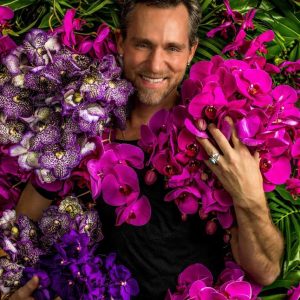
There are florists and there are floral artists. JEFF LEATHAM, the celebrated artistic director and tastemaker is squarely the latter.
As Artistic Director of the Four Seasons Hotel George V in Paris, and the Four Seasons in Beverly Hills and Philadelphia, Jeff has been creating a sensation with his floral designs and installations since he first began working with flowers at the Beverly Hills Four Seasons in 1994.
In 2014, Leatham received one of his biggest honors to date — the prestigious Chevalier de l’Ordre des Arts et des Lettres, the French Government’s equivalent of a knighthood and the nation’s highest honor for artists who have made a significant contribution to French culture.
Leatham’s bold and intuitive sense of color, chic and stylish and elegantly simple arrangements have made him one of the most in-demand talents for weddings, parties, holidays, brand collaborations, hotels, fashion shows and other global events. Breathtaking and unforgettable, Jeff’s signature designs are always integral to the setting, never merely a backdrop.
Most recently, Leatham was hailed by The New Yorker as the “mastermind” of the New York Botanical Garden’s Orchid Show’s return in 2022 (after previous shows, including his 2020 event were cut short due to the pandemic). An undisputed hit, the show was described as “joyous, uplifting and timely” “intensely beautiful” and “brilliantly conceived” by Forbes and according to Travel & Leisure, “the most Instagrammable event we’ve ever seen”
He’s recently launched a nationwide high-end floral delivery service — Bloom Bundle — featuring specialty fresh flowers from Holland and South America that are favorites at the Jeff Leatham Studios. In 2021, he launched a gender-free fragrance line with longtime client Kim Kardashian West (Jeff Leatham by KKW). On the heels of that success, Leatham will release his first solo-branded fragrance — Voodoo Rose — this year.
Leatham’s career exploded in 1999 when he was recruited to design the lobby of the newly re-opened and renovated George V. His previous work at the Four Seasons in Los Angeles had so impressed the owner of the legendary Paris hotel, he gave him carte blanche to design the venerated palace as he saw fit. His work became the hotel’s signature – often using 13,000 stems a week — and provided Jeff a global stage to showcase his many talents and being dubbed “the most fashionable florist in town” by The New York Times.
The Times went on to encapsulate his work: “What makes his flowers so seductive is his belief that they are an artistic medium. He sculptures, builds and blends. He plays with dimension and texture. He breaks planes and disrupts symmetry. He infuses each display (he doesn’t do ‘bouquets’) with clean lines, strong colors and a lot of unspoken sex.”
Leatham breaks down his design aesthetic to what he calls the Leatham Rule of 3. “Keep everything clean, simple and chic. Never mix more than three types of flowers or colors together. and Keep everything monochromatic.” His combinations of shape, color and simplicity produce dramatic effects and make bold unforgettable statements, with many of his installations compared to contemporary art and all are unmistakably his. Says Leatham: ” In fashion you can look at Valentino and say ‘That’s a Valentino red dress’ or ‘That’s an Yves Saint Laurent white women’s tuxedo.’ I’m lucky to have a design that is characteristic to me. You can look at a style of flowers and say, ‘That’s Jeff Leatham.'”
Leatham’s work at the George V helped him attract an A-list celebrity clientele — including Cher, the Dalai Lama, The Kardashian family, Madonna, Dolly Parton, Tina Turner and Oprah Winfrey, and as well as designing the weddings of Chelsea Clinton, Eva Longoria, Tina Turner and Sophia Vergara.
His work has been part of design expositions around the world through frequent collaborations with international luxury brands including Dolce & Gabbana, Alexander McQueen, Chanel, Balenciaga, Bulgari, Swarovski Crystal, Givenchy, Ellie Saab, Louis Vuitton, Goyard, Burberry, Waterford Crystal, Dom Perignon, Lexus, and Samsung.
Leatham has taken his living art to other mediums as the author of three best-selling books, including Flowers by Jeff Leatham, Flowers by Design, and Jeff Leatham – Visionary Floral Art and Design for Rizzoli and his forthcoming The Art of the Flower due in 2023. In addition, he was the creator and star of the TLC/Discovery documentary series Flowers Uncut.
In 2016, Jeff had a homecoming of sorts when he added art directing the Four Seasons Hotel Los Angeles back to his portfolio, while continuing his work at the George V and later adding the Four Seasons Philadelphia to his stellar client list.
Leatham’s work has been featured at the Chateau De Versailles’ first major event since the time of Louis XIV and Marie Antoinette, the 2004 re-opening of MoMA in NYC and in iconic holiday windows for Bloomingdales as well as two immersive, 5-week long art exhibits at Intersect by Lexus in New York City and in the Main Pavilion of Franklin Delano Roosevelt Park for the Philadelphia Flower Show “HABITAT: Nature’s Masterpiece” in 2021.
Leatham has pushed the boundaries of modern floral design and will continue to be a tastemaker for years to come and he’ll appreciate every second of it, as he said to USA Today:
“I create lasting memories and put smiles on people’s faces every day. That’s the best part of my job. From when we do a huge installation and people are like, ‘Oh my God,’ to the simplicity and beauty of one of my guys delivering a beautiful flower arrangement to someone from someone they love. I’m a pretty lucky guy.”

Leatham’s work at the George V helped him attract a celebrity clientele — including Madonna, the Dalai Lama as well as Chelsea Clinton, whose wedding he designed — in addition to collaborations with brands like Balenciaga, Alexander McQueen, Dom Pérignon and Chanel. In 2014 he was awarded the prestigious Chevalier de l’Ordre des Arts et des Lettres, the highest honor for artists who have made a significant contribution to French culture given by the Minister of Culture. He has also created the floral design at Versailles, among other famous landmarks.
Jeff is also the author of three best-selling books, including Flowers by Jeff Leatham, Flowers by Design, and Jeff Leatham – Visionary Floral Art and Design, and he is creator of the documentary series Flowers Uncut. Jeff also has a line of giftware and barware, “The Jeff Leatham Collection,” with Waterford Crystal, and he will be releasing his first signature fragrance later this year.
In 2016, Jeff had a homecoming of sorts when he added back to his portfolio the Four Seasons Hotel Los Angeles, which he art directs in addition to the George V. He also has incorporated the Four Seasons Philadelphia at Comcast Center to his growing clientele. Jeff operates four offices around the work, including Paris, LA, Philadelphia and China.
I create lasting memories, and I put smiles on people’s faces every day. That’s the best part of my job, from when we do a huge installation and people are like, ‘Oh my God,’ to the simplicity and the beauty of one of my guys ringing someone’s doorbell and there’s a beautiful flower arrangement in their hands from someone that they love.
My whole styling and favorite period is that whole Mid-century Modern [era] – the 60s and 70s are so inspiring to me because those designs are so timeless and bold. I think that’s what I want people to think of my work as timeless, bold statements of color and texture. And when I work there’s definitely a certain style –my flowers leaning out the side of the vase, for example. There’s a styling that goes with a Jeff Leatham look. I’m lucky as a designer to have a design that is characteristic to me and my personality, especially in floral design. In fashion you can look at Valentino and say, ‘That’s a Valentino red dress’ or ‘That’s a white women’s tuxedo from Yves Saint Laurent.’ The fact that you can look at a style of flowers and say, ‘That’s Jeff Leatham,’ makes me a lucky guy.
Talent and inspiration, but the real secret are the flowers themselves—they’re the real star. It comes down to the quality of the flowers, so make sure you buy high-quality flowers and make sure they last a long time. You want the colors to remain beautiful and make sure their heads aren’t drooping. You know, in Paris, I get all my flowers directly from Amsterdam.
Keep everything clean, simple, and chic, which means bunching all of one type of flower together; never mixing more than three types of flowers or colors together and keeping everything monochromatic. For me the most important thing is just creating things and evolving, so you’re never just staying stagnant. You always have to have your signature thing. I think it’s just being your own person and your own artist, no matter what you do.
For me, seeing the space is the most important. I can never just work off of a photo — I’m a very visual person, so I actually need to go to the space and see what’s going on. The color is the next important piece to me: deciding what color to use, a color that goes with the space. Then, we decide on the shape we want and then we decide on the flowers. It’s kind of the reverse process that people think: usually, people would think, ‘Oh, you choose the flowers first,’ but the flowers are actually the last thing I choose.
What do you differently from other artists/ florists?
I create lasting memories, and I put smiles on people’s faces every day. That’s the best part of my job, from when we do a huge installation and people are like, ‘Oh my God,’ to the simplicity and the beauty of one of my guys ringing someone’s doorbell and there’s a beautiful flower arrangement in their hands from someone that they love.
What is your style/ inspiration?
My whole styling and favorite period is that whole Mid-century Modern [era] – the 60s and 70s are so inspiring to me because those designs are so timeless and bold. I think that’s what I want people to think of my work as timeless, bold statements of color and texture. And when I work there’s definitely a certain style –my flowers leaning out the side of the vase, for example. There’s a styling that goes with a Jeff Leatham look. I’m lucky as a designer to have a design that is characteristic to me and my personality, especially in floral design. In fashion you can look at Valentino and say, ‘That’s a Valentino red dress’ or ‘That’s a white women’s tuxedo from Yves Saint Laurent.’ The fact that you can look at a style of flowers and say, ‘That’s Jeff Leatham,’ makes me a lucky guy.
What’s the secret of your success?
Talent and inspiration, but the real secret are the flowers themselves—they’re the real star. It comes down to the quality of the flowers, so make sure you buy high-quality flowers and make sure they last a long time. You want the colors to remain beautiful and make sure their heads aren’t drooping. You know, in Paris, I get all my flowers directly from Amsterdam.
What is the “Leatham Rule of Three”?
Keep everything clean, simple, and chic, which means bunching all of one type of flower together; never mixing more than three types of flowers or colors together and keeping everything monochromatic. For me the most important thing is just creating things and evolving, so you’re never just staying stagnant. You always have to have your signature thing. I think it’s just being your own person and your own artist, no matter what you do.
What is your process? Where does it start?
For me, seeing the space is the most important. I can never just work off of a photo — I’m a very visual person, so I actually need to go to the space and see what’s going on. The color is the next important piece to me: deciding what color to use, a color that goes with the space. Then, we decide on the shape we want and then we decide on the flowers. It’s kind of the reverse process that people think: usually, people would think, ‘Oh, you choose the flowers first,’ but the flowers are actually the last thing I choose.
What first attracted you to floral design?
I was working retail for the Gap and modeling part time. I came home from Europe and got a job at the Four Seasons at Beverly Hills. Before then I had never touched a flower, never even wanted to work with flowers, and that’s where my career started. Four Seasons really gave me that whole spectrum: I started making big, grand flower installations, so that really helped me be the artist I am today.
You’ve achieved international fame, yet you continue your work with Four Seasons hotels (Paris, Beverly Hills, Philadelphia) — a company you joined more than 20 years ago.
A lot of people, when they achieve success at a young age, tend to take every offer that they get to grow their brand and do different things. The loyalty that I’ve had to Four Seasons and to my clients has probably been the biggest secret to my success. I recently celebrated my 20-year anniversary at the George V. People still say, ‘I want to hire that guy that does the flowers in the lobby of that hotel in Paris.’ They still say that, all these years later. Even if they don’t know my name, they know where my flowers come from. My biggest clients, my greatest friends—how did you meet them? In the lobby of the George V. I did Chelsea Clinton’s wedding. Where did I meet the Clintons? In the lobby of the George V. Four Seasons has basically given me my entire career — they’ve always been there and been super supportive.
I was working retail for the Gap and modeling part time. I came home from Europe and got a job at the Four Seasons at Beverly Hills. Before then I had never touched a flower, never even wanted to work with flowers, and that’s where my career started. Four Seasons really gave me that whole spectrum: I started making big, grand flower installations, so that really helped me be the artist I am today.
A lot of people, when they achieve success at a young age, tend to take every offer that they get to grow their brand and do different things. The loyalty that I’ve had to Four Seasons and to my clients has probably been the biggest secret to my success. I recently celebrated my 20-year anniversary at the George V. People still say, ‘I want to hire that guy that does the flowers in the lobby of that hotel in Paris.’ They still say that, all these years later. Even if they don’t know my name, they know where my flowers come from. My biggest clients, my greatest friends—how did you meet them? In the lobby of the George V. I did Chelsea Clinton’s wedding. Where did I meet the Clintons? In the lobby of the George V. Four Seasons has basically given me my entire career — they’ve always been there and been super supportive.
My team is everything to me. That’s why I also tag #TeamLeatham on my social media. I am nothing without my team. They make it possible for me to do all of this travel, they make all these beautiful things possible, and I have the most brilliant, talented team in the world.
My favorite flower of all time is the magnolia. Listen, I’m not trying to be like the Dalai Lama here, but the magnolia reflects experiences in life. It’s absolutely beautiful when you pick the flower, but because the life span of a magnolia is so short, the flower loses its beauty day-by-day. So, you have to enjoy it and love it while you can. Magnolias are probably the rarest flower and also my favorite.
You always credit your team for your success. How do you stay so modest?
My team is everything to me. That’s why I also tag #TeamLeatham on my social media. I am nothing without my team. They make it possible for me to do all of this travel, they make all these beautiful things possible, and I have the most brilliant, talented team in the world.
What’s your favorite flower?
My favorite flower of all time is the magnolia. Listen, I’m not trying to be like the Dalai Lama here, but the magnolia reflects experiences in life. It’s absolutely beautiful when you pick the flower, but because the life span of a magnolia is so short, the flower loses its beauty day-by-day. So, you have to enjoy it and love it while you can. Magnolias are probably the rarest flower and also my favorite.
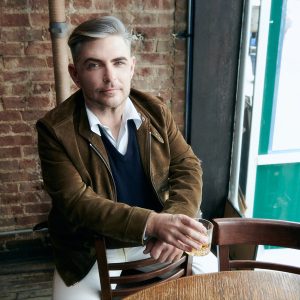
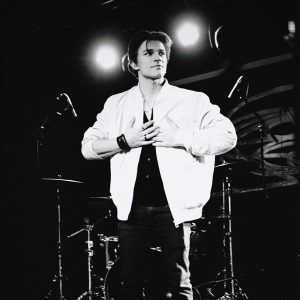
Alex Sampson is one of music’s brightest new talents, and on the verge of a superstar career. Before signing to the Warner Music Group, Sampson’s videos earned millions of views on YouTube, where songs like “Cold Shoulder,” “Let There Be Light,” and “Play Pretend” turned music lovers into fans of his slick pop dramas and simple but effective videos, positioning him to take the crown of his chart idols, and fellow Canadians, Justin Bieber and Shawn Mendes. “I’ve always known it’s what I wanted to do; I couldn’t imagine taking another path that didn’t embrace music,” says Sampson.
Sampson is a native of Atikokan, Ontario, a small, remote town in the western end of the province above Minnesota. While growing up there, music was a constant presence in his house, as his family listened to a swath of genres, giving Sampson exposure to the best of rock and roll, R&B, jazz, country, and of course, pop. Sampson’s father is also a musician and encouraged his son to develop his innate talents on piano and guitar. Sampson was soon crafting songs in his teens and has written prodigiously since then. Of his songwriting he says, “ I’ve written countless songs and I love them all so much, but most of my favorites are unreleased though and I’m super excited to get them out.” How does Sampson generate so much material? He says, “I find inspiration for my music mainly from my everyday life. I tend to write about what I’m going through in the moment. Sometimes I will pull up something from the past, like an old relationship or a breakup. I also get inspiration from the weirdest things. If I hear a cool word or phrase, I’ll think to myself, ‘that could be a good song,’ And then in the notes app it goes!”
Sampson has discovered how much he enjoys the thrill of live performance in front of an audience saying, “Performing live is a whole other ball game. I just did my first ever concert in Toronto and it was amazing. I opened up for Vaultboy on his tour, and I wasn’t sure if anyone was going to come for me, but when I got up there, there were so many people singing along to my songs and it was an amazing feeling to have. I go live on social media and sing all the time but this is way different. Seeing people’s faces, seeing them dance and sing along is a feeling I had never felt and I can’t wait to jump back on stage soon.”
Sampson is assembling existing songs to comprise what will be his first full album, while continuing to write more material. Though he is looking forward to his major label debut, Sampson is enjoying the calm before the storm by engaging in daily workouts, video games and hanging out with friends while taking trips to lakes in the Canadian wilderness. “There is so much on the horizon, I want to be ready for what is about to happen.”
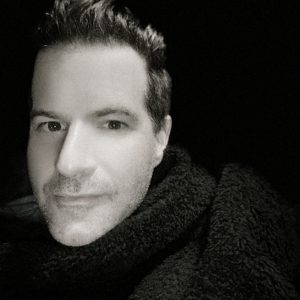
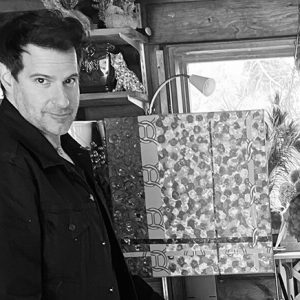
Debuted his handbag collection in Vogue. Designed clothes, jewelry, and accessories. Authored books. Even opened a bakery. Now, fashion veteran Darren Greenblatt is channeling his creativity in a whole new medium: mixed media art. Combining paints, French acrylics, Hermes and Gucci wallpapers and vintage magazines, the critically acclaimed designer and producer has created a 20-piece series that evokes his love/ hate relationship with the industry, bringing to the canvas a visual dialogue that confronts fashion’s waste and pretension with its artistry, beauty, and relevance.
Debuted his handbag collection in Vogue. Designed clothes, jewelry, and accessories. Authored books. Created and sold TV shows. Even opened a bakery. Now, fashion veteran Darren Greenblatt is channeling his creativity into new mediums. His third book F*ck Off Chloe- Surviving the OMGs and FMLs in Your Media Career will be published in March 2022, featuring his illustrations along with author Jeremy Murphy’s prose.
This artistic output continues with Darren creating art, and taking interior design commissions- from London to Los Angeles. His recent mixed media works are inspired by his decades-long career as an outsider within the fashion industry. Combining paints, French acrylics, Hermes and Gucci wallpapers, and vintage magazines, the critically acclaimed designer and producer has created a 20-piece series- his first collection in eight years- that evokes his love/ hate relationship with the industry, bringing to the canvas a visual dialogue that confronts fashion’s waste and pretension with its artistry, beauty, and relevance.
The result is a collection bursting with color, contradiction, and nostalgic futurism.
“As a fashion ‘refugee’ with distance from the industry, and from the craft that has been a driving force since I was a child, I’m able to explore and see things with new eyes,” says Greenblatt, who creates his art from his home studio in Princeton, New Jersey. “My recent work homages the enigmatic and magical world of fashion- past, present & future – and how it works within different spaces and mediums.”
Greenblatt found inspiration in a wealth of materials, from flowers to graphic design, layered patterns, prints, and textures. His use of color is boisterous and bold, brimming with hope and fury. How those elements relate and conflict gave the artist the tension to capture his message and complete the fantasy.
“There is friction between the duality of organic nature within confined spaces, and two-dimensional graphic design of three-dimensional matter,” he says.
Rather than name each work, Greenblatt, in an ode to the fashion industry, simply numbered each piece — like the looks/ exits from a runway presentation. Greenblatt’s new series is his first collection in eight years. After more than two decades in New York, where he established himself a creative and entrepreneurial force in the fashion industry, Greenblatt, his husband Sam, and daughter Olive relocated to Princeton, NJ in 2015, amid protracted custody-related litigation. The move and overwhelming sense of loss extinguished the creativity that once helped him produce enduring art.
“Our lives became learning to survive trauma,” Greenblatt says. “That may serve as inspiration for other artists, but it was never what drove me to create. So, it was hard to find the light and color that always guided my work in such darkness.”
It was in 2019 when Greenblatt began thinking of the new series as an emotional response and a desire to find the color in life again, which was fortuitous because six months later the pandemic hit.
“It’s what I needed, and I think what the world needed,” Greenblatt says.
Greenblatt’s career trajectory has taken many routes. A graduate of the Fashion Institute of Technology – where he won the prestigious Critics’ Choice award, he studied with designer Betsey Johnson and couturier Christian Francis Roth before founding his first multi-media platform, Girls Rule. It was the first group show during NYFW catering to the youth market and created a new runway for emerging designers to show their collections, sponsors to enter the industry and up-and-coming models, actresses, and socialites to take the world stage. Girls Rule ruled New York Fashion Week for a decade. Planet Yumthing D-I-Y, Greenblatt’s second multi-media platform for teens, produced a website, a book (Randomhouse), and a TV pilot (Fox Family). At the same time, Greenblatt designed himself, becoming a creative director for iconic fashion brand Fiorucci before starting his own luxury bag label Stanton Maxwell, whose collection debuted in Vogue’s 2008 September issue. Greenblatt also began an illustration series called “The Ugly Lives of Beautiful People,” featuring sketches of runway collections with pithy, ironic quotes about life, culture, and the fashion industry.
Greenblatt has been featured in Vogue, Harper’s Bazaar, Allure, People, and Women’s Wear Daily and his designs have been sold at Bloomingdales, Bergdorf Goodman, Saks Fifth Avenue, and Jeffrey New York. He has appeared on The Apprentice, The Today Show, The View, Rachael Ray, and CNN. Darren’s first gallery show was in the west village, NYC in 2001, and his first interior design project was his own NYC apartment, which won Honorable Mention in Metropolitan Home magazine’s esteemed Home Contest.
The 2009 recession encouraged Greenblatt to expand his creative palate to a new medium: food. His passion for cooking, entertaining and experience-design, coupled with the entrepreneurial instincts that have always guided his work, led him to start Donna Bell’s Bake Shop first as a mobile food truck and later, with two friends as a brick-and-mortar shop in midtown Manhattan. Its success spawned the NYT best-selling book, Donna Bell’s Bake Shop: Recipes and Stories of Family, Friends and Food.
Upon relocating to Princeton, Greenblatt started a new firm, Princeton Creative Services, a full-service agency dedicated to the life-enhancing power of good design. Its purpose? To make lives and spaces more beautiful. Something he has done throughout his career.
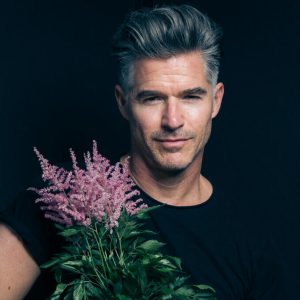
There are florists and there are floral artists. JEFF LEATHAM, the celebrated artistic director and tastemaker is squarely the latter.
Brand ambassador. Model. Influencer. Content creator. Known to more than 250,000 followers as @mr.rutherford, his positivity, smile, silver fox mane, and impeccable style have made him a magnet for marketers and brands who want to reach audiences through an authentic voice and lens. He rose to early prominence when, in his early twenties, he was discovered by famed photographer Bruce Weber at a restaurant in Miami. Within a week, he was chosen as the subject for a major fashion shoot for L’Uomo Vogue, shot by Weber.
Rutherford enjoyed a career as an actor and model, shooting tv, commercial and editorial work for top brands, magazines, and television shows. Rutherford soaked in each new experience, looking beyond the glossy photos to understand the photographer’s eye, the director’s vision, and the designer’s inspiration. His interest was always being more than just another pretty face. After years of acting and modeling, he focused on learning all the elements of producing events. From creating brand collaborations to marketing campaigns to world premiere events, he worked with some of the most recognizable names, even working with someone named Oprah. Through each new project, Rutherford learned the nuts and bolts of brand awareness, audience development, and finding your authentic voice.
